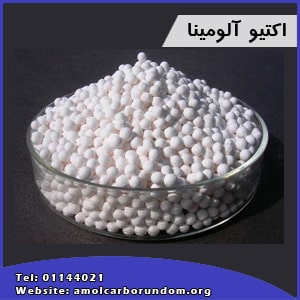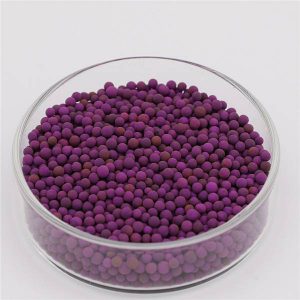Activated Alumina
Activated Alumina is obtained from the dehydroxylation of Al (OH) 3 aluminum hydroxide . In this way, materials with very high porosity will be produced. The formed material can have a contact surface of more than 200 square meters per gram of it. This compound is used as a desiccant, fluoride filter, arsenic and selenium in drinking water. This compound contains high amounts of aluminum oxide or alumina [Al 2 O 3 ]. Due to the many shaped tunnel cavities that this material has, it has a very high contact surface to weight ratio.

Active applications of alumina
Applications of active alumina or activated alumina include its use in the environment, medicine and petrochemicals. Here are some uses for this article:
1- Using activated alumina as a catalyst
It is used as a catalyst in the production of polyethylene and the production of hydrogen peroxide. It is also used to remove sulfur from currents in the Klaus process.
Recommended article: View the types of catalysts
2- Moisture absorber
This material is also used as a moisture absorber . The moisture in the air is absorbed by the active alumina and thus the so-called air dries. In addition to this material, there are other moisture absorbers such as silica gel and molecular , which depending on the amount of moisture or the amount of drying, the appropriate absorber should be selected. In contrast to the process of moisture absorption by this adsorbent, there is also the process of repulsion or so-called reduction of the adsorbent. To regenerate this material, it can be placed in contact with a temperature of about 280 degrees Celsius.

3- Fluorine adsorbent
Activated alumina is also used to remove fluoride in drinking water. Fluoride in water will cause bone diseases and reduce children’s intelligence.
Other active uses of alumina include:
- Use in PSA technology or other dryers
- Drying of many organic liquids and bringing their moisture content to less than 10 ppm
- Eliminates elements such as fluorine, chlorine, arsenic and cadmium
- Removal of compounds such as TBC ( 4-tert-butyl tectecol ), carbonyl sulfide and hydrogen disulfide
- Removal of moisture in the food and pharmaceutical industries
- Drying of many gases such as air, ammonia, carbon dioxide and…
- Drying liquids such as benzene, ethyl acetate and…
Physical properties of active alumina
Activated alumina is available in different sizes, the most commonly used size is 3-5 mm. The size of 8-5 mm is often used as a pre-bed for very large dryers or as a pre-bed in moisture-absorbing substrates by silica gel. This material is also divided into different consumption grades. The following are the technical specifications of Active Alumina.

You may sometimes see activated alumina in purple or yellow. Purple Activated Alumina is actually a mixture of alumina and potassium permanganate. Also, its yellow product is a combination of alumina and zeolite (molecular). Below you will see the shape of these two grades. The combination of alumina with these materials will help improve its absorption.





